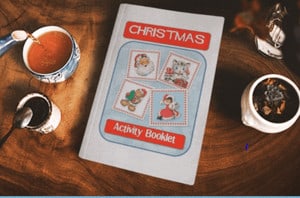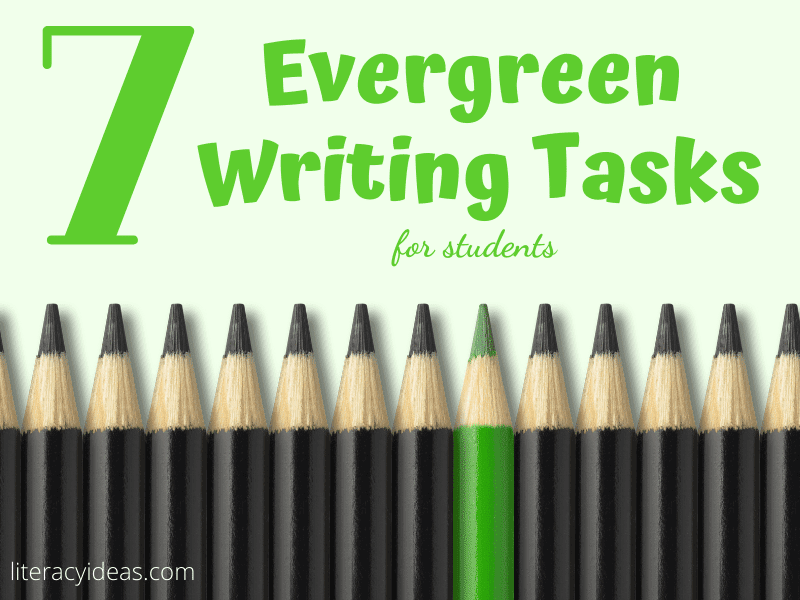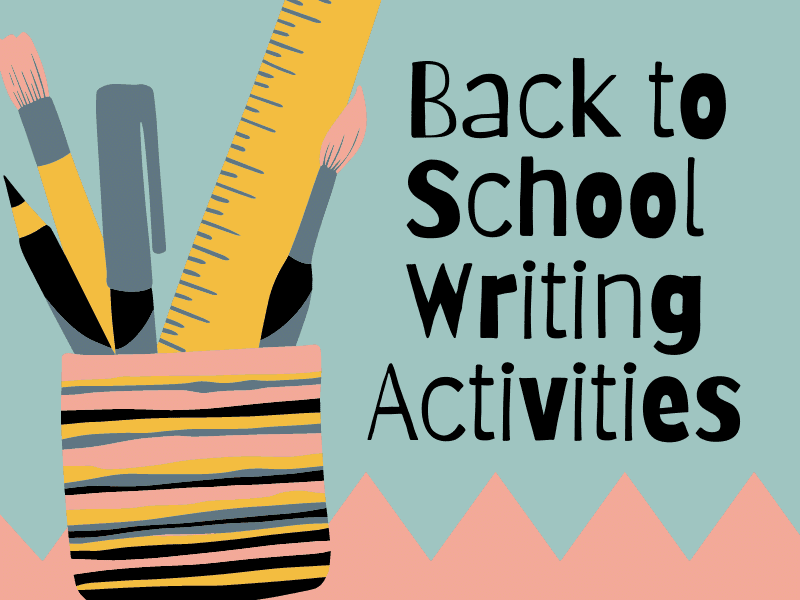
Seasonal Writing Activities Provide a Year of Fun Writing Opportunities
As teachers, we are constantly on the lookout for novel ways to keep our students engaged while we endeavor to impart the necessary literacy skills they will need throughout life.
And while the old proverb has it that “There’s nothing new under the sun”, effective learning occurs when the skills students learn in the classroom can be related to the world outside in an interesting and memorable way.
Just as there is a repetition and rhythm to the year in the world outside, there is a repetition and rhythm to the school year. Linking writing tasks in the classroom to seasonal and holiday events outside can be a compelling way to link classroom learning to the outside world – who doesn’t love a festival or two, after all?
In this article, we will look at how seasonal events and holidays can be used as jumping-off points for lessons aimed at honing a broad range of our students’ writing skills.
While each task is categorized under a particular holiday or season, these can often be easily adapted to the specifics of other holidays and seasons as needed.
Now, let’s take a look at some holiday and seasonal writing activities every student and teacher should do in their classroom.
1. Seasonal Resolutions – go-getting and goal-setting

This activity can be encouraged as part of regular journal writing or as a separate distinct task at the start of each new season or term.
It can serve as a type of new year’s resolution writing, and it helps our students to focus on areas where they can improve in any aspect of their life, whether academic or personal.
When helping students to organize the writing of their goals, the acronym SMART can be beneficial.
Specific – where goals are vague, it is difficult to assess whether or not they are achieved. Therefore, students should ensure their goals are well-defined and clearly articulated in their writing.
Measurable – goals must be quantifiable in some shape or form; that is, students should be able to assess when a goal has been attained.
Achievable – when setting goals, students should ensure there is a level of realism to the goals they set. Students should avoid setting such fantastic goals that it will be impossible for them to achieve them.
Relevant – while the goals students set can relate to a broad range of topics, they should always be relevant to a wider purpose or aim in the student’s life. Generally, goals will be steps on a long journey of some sort.
Time-constrained – just as students need to be specific when defining their goals, they also need to ensure they set an appropriate timeframe within which they will achieve them. Setting deadlines and sticking to them helps students ensure they meet their targets while also helping to hold them accountable.
2. Valentine’s Day Poetry – penning the poetry of love

What better time of year to focus on poetry than Valentine’s Day itself?
Often, younger students are asked to make a Valentine’s card for mum and dad. For the little ones, this amounts to an arts and crafts activity that reinforces motor skills while providing an opportunity to practice emergent writing skills.
You can, however, also take an opportunity here to teach and reinforce student understanding of various types of poetry.
Younger students, they may wish to work on writing a simple limerick to the object of their affections. Or, they may wish to write an acrostic poem using the letters of the person’s first name to start each line. Older students may focus on more complex poetic structures such as lyrical poetry or the sonnet.
It is usually helpful to show some examples of the poetic structure first, before breaking it down into its technical components such as rhyme scheme, meter, and use of poetic devices.
Writing poetry can be daunting for many students. It is important to emphasize the merits of having a go here over attaining technical excellence with the iambic pentameter!
3. April Fools’ Day – no better time for a comedy jam!

April Fools’ Day (or All Fools’ Day) is the perfect time of the year to get your students to attempt some comedy writing.
At a time when pranks can sometimes get out of hand, why not take this opportunity to encourage your students to direct their energies into writing for the amusement of each other instead?
This writing can take the form of simple jokes. Perhaps you could round off the activity with a stand-up comedy jam where each student gets one minute to present their material to the class.
However, you can incorporate other writing genres into this comedy-writing focus. Getting students to work together in small groups to collaborate on producing comedic sketches can be great fun, as well as an effective means of introducing the fundamentals of scriptwriting to your class.
4. Summer Vacation – travel writing of a sort!

This activity works as an excellent engaging homework over summer vacation.
For the younger students, after modelling postcard writing in class, challenge them to send a postcard to their school over the holidays. They should include the usual familiar features of a postcard layout such as a formatted address, a suitable greeting, and completed with a personal signature.
Students should also include some details about their trip such as where they went, who they went with, and what they did there.
For older students, the summer holidays can be the perfect time to engage in some travel writing. This could be in the form of keeping a journal of their travels, writing reviews of restaurants, destinations etc, or even by starting a personal blog.
Just as with journal writing, the personal nature of blogging lends itself well to travel writing. Blogging though also offers students an opportunity to develop not only their writing skills but to gain familiarity with skills related to publishing on the web.
There are several ways to set up personal blogs for free using sites such as WordPress, Wix, and Weebly. There are also various security settings that allow for restricting access only to those pre-approved.
5. Halloween Ghost Stories – terrible tales well told!

Derived from the ancient Gaelic festival of Samhain, which marks the beginning of the ‘dark half’ of the year, today the popularity of Halloween now extends around much of the world. Halloween is a great time to focus on the craft of storytelling – everyone loves a good ghost story after all.
As well as reinforcing the structural elements of good story-writing such as characterization, plot, resolution etc, writing ghostly tales can be a helpful lead-in to introduce the art of oral story-telling with Halloween serving as the perfect backdrop.
After the students have organized their tale through writing it, encourage them to tell it to the class using body language, gesticulations, voice modulation etc to bring their horrid tale to life in the minds of their listeners.
Read our complete guide to writing Halloween/ Scary stories here.
6. Christmas Letter Writing – with a twist!

Depending on your background, you may remember writing a letter to Santa in childhood.
Often they were little more than a wishlist accompanied by some personal propaganda about what a good boy or girl you had been throughout the year.
Many elementary teachers encourage their young students to write these at school so as to avail of the opportunity to teach the basics of letter writing and formatting.
But, have you considered using it with older students too? With a twist, of course!
Organize the students in the class into pairs. One student is appointed as Santa, the other as the naughty child.
The child writes a letter (or email) to Santa to tell him what they want for Christmas while also extolling their own virtues as a good boy or girl. Santa responds with a message challenging the truth of their status as a good child by referring to the specifics of imagined misbehaviours. The naughty child responds and so on.
This exercise not only allows for opportunities for some imaginative and humorous flights of fancy but can be used to reinforce letter-writing or email writing best practices.
As an extension exercise, you may wish to ask the students to script their communication as a dialogue (script-writing) and then ask them to act out the dialogue for the entertainment of the class.
Be sure to check our 25 great Christmas Literacy Activities here
7. New Year’s Celebrations – research and report writing

More likely than not the kids will be on school vacation over the New Year period. So, this writing activity can work well as homework over that period.
While many of us around the world ring in the New Year on the evening of the 31st December, we don’t all do it in the same way. Indeed, many places and people around the world mark the beginning of the new year on different dates entirely while following different calendars.
This project encourages students to employ their research skills and knowledge of the criteria of report writing to complete a report on the different ways people celebrate New Year’s around the world.
Students may wish to choose a country or culture they have a connection to, or they can simply pick a place or custom they have an interest in. Some interesting traditions include Scotland’s Hogmanay, Thailand’s Songkran, and, of course, Chinese New Year.
For younger students, you can simplify the writing criteria, while older students can produce more sophisticated pieces of work drawing on more comprehensive research.
You may even wish to challenge them to produce multimedia presentations to deliver when they return to school. A fun and entertaining way to start the new term.
These are just a few of the seasonal celebrations and holidays that can serve well as the focus or background to writing tasks. There are, of course, many others that have gone unmentioned but, with a little reflection and creativity, it should be easy enough to amend many of these writing tasks to suit most occasions.
While the skills of writing are many and varied, unless we are able to convince our students of their relevance and timeliness, they will remain a hard sell to many. Seasonal and holiday-themed writing tasks can serve as a strong tool to have in any literacy teacher’s arsenal.






